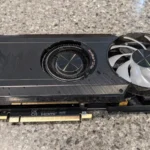Experiencing the “local network access only” issue is a common problem for many devices. This message means that your device can connect to other devices on your local network but cannot access the internet. This article explains what might cause this issue and provides step-by-step solutions to help you regain internet access. When you see the “Local Access Only” message after connecting to a network, it means there’s a problem with accessing the internet even though you’re connected to a local network. This issue can have various causes, such as problems with the network adapter or incorrect IP configurations.
You can often fix this problem on your own by troubleshooting the network connectivity step by step, without needing professional help. One way to resolve “Local Access Only” is to start with simple measures like restarting the router and checking connections. If the problem persists, you can try more technical steps, such as using command prompt instructions like ‘ipconfig’ commands to refresh the IP address and fix connectivity issues. It’s also important to check network settings and hardware configurations to ensure they are set up properly and working correctly.
Troubleshooting “Local Network Access Only” Issues
Understanding the Problem
“Local network access only” means your device can connect to other devices on your home or work network, but not the wider internet. This can be frustrating, preventing access to websites, online services, and updates.
Common Causes and Solutions
| Cause | Solution |
|---|---|
| Incorrect DNS settings | Change DNS servers to reliable public ones (e.g., Google DNS 8.8.8.8 or Cloudflare DNS 1.1.1.1). |
| Router issues | Restart your router. Check for firmware updates and ensure it’s properly configured. |
| Modem problems | Restart your modem. Contact your internet service provider if issues persist. |
| Firewall or security software conflicts | Temporarily disable your firewall or antivirus software to see if they are blocking internet access. If so, adjust their settings to allow access. |
| IP address conflicts | Check for duplicate IP addresses on your network. If found, change the IP address of your device or set it to obtain an IP address automatically (DHCP). |
| Network adapter problems | Update or reinstall your network adapter driver. Disable and re-enable the network adapter. Check the Ethernet cable if you’re using a wired connection. |
| VPN interference | If you are using a VPN, disconnect it and see if you can access the internet. If the issue is resolved, try changing VPN servers or contact your VPN provider for support. |
| ISP outage | Check your ISP’s website or social media for announcements of any service outages in your area. Contact them for support if necessary. |
Additional Tips
- Restart your device: This can sometimes resolve temporary glitches.
- Clear browser cache and cookies: Corrupted data in your browser can interfere with internet access.
- Use a different browser: Try accessing the internet using a different browser to see if the issue is specific to one browser.
- Reset network settings: This will reset your network configurations to their default settings. (Note: You will need to re-enter any saved Wi-Fi passwords.)
Key Takeaways
- A “Local Access Only” message indicates a connectivity problem, even if connected to a local network.
- Initial troubleshooting steps include restarting the router and modem.
- Technical steps using command prompt commands may be required if initial steps fail.
Diagnosing Connectivity Issues
When internet issues arise, it’s important to pinpoint the problem. This can involve checking various network components and settings to determine where the fault lies. The right tools and knowledge can help restore your connection quickly.
Understanding Network Components
Your home network is made up of several parts. The modem brings internet to your home. The router then shares it with different devices via ethernet cables or Wi-Fi. Devices employ IP addresses to find and communicate with each other. Knowing how these pieces work together is the first step in solving network problems.
Identifying Common Network Problems
Network issues often link back to a few usual suspects. A modem or router may fail, leading to no internet signal. IP conflicts or incorrect network settings also cause issues. Sometimes, it’s as simple as a loose ethernet cable. Checking each component helps you find what’s wrong. Be sure to look at Wi-Fi signals and DNS server responses too.
Utilizing Built-in Troubleshooting Tools
Windows offers a convenient Network Troubleshooter to address common problems. You can run it by right-clicking the network icon and selecting Troubleshoot Problems. The Command Prompt can run checks like pinging your local IP address to test if your network interface device works. It can also ping your default gateway, the router’s IP address you’ll find via the ipconfig command. These tools help identify and possibly fix connectivity issues without extra software.







